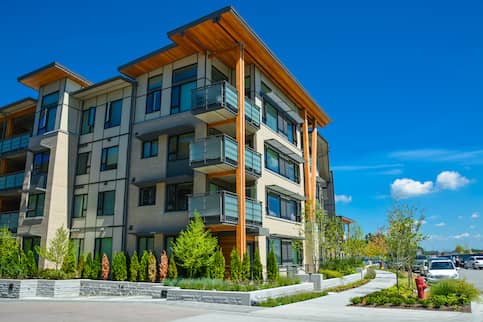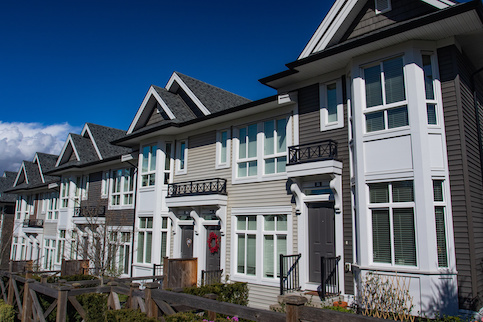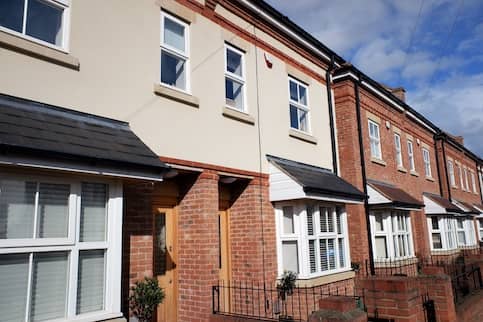Net operating income (NOI) is a calculation used to measure the profitability of real estate investments. NOI is determined by subtracting a property’s operating expenses from its total revenue.
Understanding this metric can help you evaluate potential investments and make better financial decisions. This article will explain what NOI is, what’s included and how to use the NOI formula.
What Is Net Operating Income (NOI)?
Net operating income is a metric for calculating the profitability of an investment property after subtracting the overhead costs. Investors and lenders use NOI to compare rental properties and make decisions about profitability. It’s often used in commercial real estate to evaluate office buildings, apartments or warehouses.
For example, let’s say you own an apartment complex and make money by renting the units out to tenants. To determine NOI, you must subtract the property’s operating expenses from the revenue it generates.
The operating expenses include things like building maintenance, utilities, insurance premiums and legal fees. And the property may generate income from parking, vending machines and laundry services in addition to rental income.
See What You Qualify For
Buy A Home
Discover mortgage options that fit your unique financial needs.

Refinance
Refinance your mortgage to have more money for what matters.
Tap Into Equity
Use your home’s equity and unlock cash to achieve your goals.
NOI Formula
You calculate NOI by subtracting your operating expenses from the gross operating income. Here’s the formula you’ll use:
Net Operating Income = (Gross Operating Income + Other Income) − Operating Expenses
In this equation, the gross operating income typically refers to any rental income. Other income refers to any additional income the property brings in outside its primary source of revenue. Operating expenses refers to any costs that go into running and maintaining the property.
How To Calculate NOI
Let’s look at the steps you’ll take to calculate NOI:
- Add up the gross operating income: The gross operating income is any revenue generated by the property. This includes rental income from tenants, parking fees and money generated by laundry services or vending machines.
- Add up the operating expenses: Next, you need to figure out how much you spend to operate and maintain the rental property. The operating expenses can include things like janitorial services, property taxes, insurance premiums and maintenance and repairs.
- Subtract the two numbers: Once you know the gross operating income and operating expenses, you can put these numbers in the NOI formula.
For example, let’s say you have a property that generates $200,000 a year in gross operating income and incurs $50,000 in expenses. That means the NOI for this property is $150,000 per year.
What Is Included in Gross Operating Income?
Gross operating income represents the total income generated by an investment property. Here are the potential revenue types included:
- Potential rental income: The potential rental income is any income generated by renting the property to tenants. This is the property’s primary source of income.
- Amenity fees: Amenity fees are any additional fees residents pay for extra services provided. For example, you can charge amenity fees for laundry services, a fitness center, covered parking or a storage facility.
- Vacancy losses: Vacancy losses refer to potential lost income due to unoccupied rental units, and they’re based on the historical vacancy rates or market averages. Vacancy losses are unavoidable and must be factored into the gross operating income.
Ready to Find Out What You Qualify For?
See options that work for your unique financial situation.
What Is Included In Operating Expenses?
Operating expenses are the day-to-day costs that go into running and maintaining the property. Here’s what that typically includes:
- Maintenance and repairs: This includes any costs that go into property upkeep like cleaning, painting or landscaping.
- Utilities: You’ll also have to pay for utilities like water, electricity, natural gas and trash removal.
- Property taxes: Property taxes are levied by your county government and are based on the property’s assessed value.
- Insurance: As a landlord, you’ll need property insurance to provide liability coverage and protection from property damage.
- Licenses and permits: Depending on where you live, you may have to pay for licensing and permits from state or local authorities.
What Is Excluded From NOI Calculations?
NOI is designed to help you understand a property’s potential cash flow, how much it costs to maintain and whether the investment is profitable or not. For that reason, certain numbers are excluded from NOI calculations.
Here are the biggest factors that aren’t included in NOI calculations and why they’re left out:
- Debt service: You may notice that the mortgage payments are excluded from NOI calculations. Mortgage payments are left out because they can vary significantly based on the investor and their financing methods. NOI is meant to show the overall health of the property, not the specific financial decisions of that investor.
- Depreciation: Depreciation isn’t included in the formula because it’s not an expense you pay for. Depreciation is an accounting concept and only becomes real once you write it off come tax season or sell the property. NOI only looks at annual expenses that come out of the income generated by the property.
- Capital expenditures: Capital expenditures are large one-time expenses you make to upgrade the property. These expenses can vary widely depending on the property, so they’re not included in the calculation. Plus, investors typically use cash reserves to pay for capital expenditures, not rental income.
NOI Calculation Example
Here’s an example that can help illustrate how the NOI calculator works:
Let’s say you purchased a small apartment building that brings in $200,000 annually between the rental and amenity fees. In addition, you must account for the following expenses:
- Maintenance fees: $10,000
- Property taxes: $20,000
- Insurance: $3,000
- Utilities: $7,000
- Property management fees: $8,000
That means the total operating expenses are $48,000. From there, you’ll calculate NOI using the following formula:
$200,000 – $48,000 = $152,000
That gives you a net operating income of $152,000 per year.
Net Income Vs. Net Operating Income
The net income is the total income earned by an investment after subtracting all expenses. This includes operating and non-operating expenses like interest paid on debt, depreciation and taxes. In comparison, net operating income is the total income earned after subtracting the expenses associated with operating the property.
The goal of net income is to provide a comprehensive view of a property’s profitability after all financial factors are considered. Whereas net operating income focuses solely on an investment property’s operating expenses.
Net Operating Income Vs. Cap Rate
The capitalization rate is another metric investors use to quickly assess a potential’s investment property’s profitability. The cap rate is expressed as a percentage and shows the relationship between the property’s NOI and its purchase price.
Here’s the formula used to calculate the cap rate:
Capitalization Rate = Net Operating Income∕Purchase Price
For example, let’s say the apartment in the previous example is listed with an asking price of $500,000. That means the property has a cap rate of 10%. Investors can compare this cap rate to the cap rate of other potential investments.
What’s considered a good cap rate will vary depending on the property type of location, but most market analysts recommend a cap rate between 5% and 10%.
The Bottom Line
NOI is an important financial metric that can help you evaluate the profitability of a potential real estate investment. However, it’s important to remember that certain expenses aren’t included in NOI calculations.
NOI is a baseline that investors can use to compare different properties and evaluate the potential profitability of an investment. It’s not a fair comparison of all the costs that will go into buying and maintaining an investment property.
See What You Qualify For
You can get a real, customizable mortgage solution based on your unique financial situation.

Victoria Araj
Victoria Araj is a Staff Writer for Rocket Companies who has held roles in mortgage banking, public relations and more in her 15-plus years of experience. She has a bachelor’s degree in journalism with an emphasis in political science from Michigan State University, and a master’s degree in public administration from the University of Michigan.












